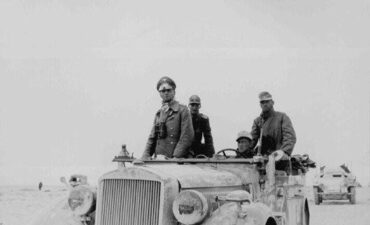What are some of the rarely mentioned trivia about the Soviet invasion of Afghanistan? Here are some rarely discussed aspects of the Soviet invasion of Afghanistan (1979–1989):
Origins in Afghan Politics
The Soviet Union’s intervention was initially sparked by infighting within the Afghan Communist Party (PDPA), specifically between its Khalq and Parcham factions. The Soviets became deeply entangled in this internal power struggle, and their invasion was partly intended to stabilize the regime and prevent the party’s collapse.
Covert Operations Before the Invasion
The USSR had already been heavily involved in Afghanistan before the official invasion. Soviet advisors and intelligence agents worked closely with Afghan leaders, and Moscow had long been supplying military aid. The invasion was seen as an escalation rather than an entirely new engagement.
The Assassination of Hafizullah Amin
One immediate cause of the invasion was the Soviets’ belief that Afghan leader Hafizullah Amin was both incompetent and leaning towards the West. Soviet special forces assassinated him during the initial stages of the invasion and installed Babrak Karmal as a more controllable leader.
Mass Desertions in the Afghan Army
The Afghan army, which was supposed to be a primary ally of the Soviet forces, experienced mass desertions. Soldiers often switched sides to join the mujahideen or simply fled the conflict, leaving the Soviets to bear the brunt of the fighting.
Chemical Weapons Allegations
There are credible but often overlooked reports that the Soviet forces used chemical weapons, such as nerve agents, against the mujahideen and civilian populations in remote areas. These allegations, though not universally confirmed, added a layer of horror to the conflict.
Resistance from Soviet Soldiers
Morale among Soviet soldiers was extremely low. Many of them were conscripts who had little understanding of why they were fighting. Drug addiction, desertion, and even instances of fragging (soldiers attacking their officers) were reported within the Soviet ranks.
CIA-Mujahideen Partnerships
The CIA’s support for the mujahideen is well known, but less discussed is the diversity of the fighters they supported. The CIA worked with groups ranging from traditional tribal militias to radical Islamists, including figures who would later become adversaries of the U.S., such as Osama bin Laden.
Impact on Soviet Economy and Society
The financial burden of the war on the Soviet Union was immense, contributing to its economic decline. The war also played a significant role in undermining public support for the government back home, setting the stage for the USSR’s eventual collapse.
Afghan Civilian Casualties and Refugees
The war caused widespread devastation, with millions of Afghan civilians killed or displaced. By 1985, half of Afghanistan’s population had either fled to neighboring countries like Pakistan and Iran or been internally displaced.
Long-Term Environmental Damage
Extensive bombing campaigns and the use of landmines left Afghanistan littered with unexploded ordnance, making agriculture and daily life dangerous for decades after the war ended. The environmental impact of these actions has been a lasting legacy.
Soviet Propaganda and Censorship
The Soviet government attempted to control the narrative around the war, portraying it as a necessary action to support a friendly socialist government. Many Soviet citizens only learned the full scale of the war’s horrors after glasnost (openness) reforms were introduced in the late 1980s.
The Legacy of Landmines
The Soviets planted millions of landmines during their campaign. These mines have continued to maim and kill long after the conflict ended, becoming a grim symbol of the war’s enduring consequences.
These lesser-known aspects highlight the complexity and far-reaching impact of the Soviet-Afghan war.









